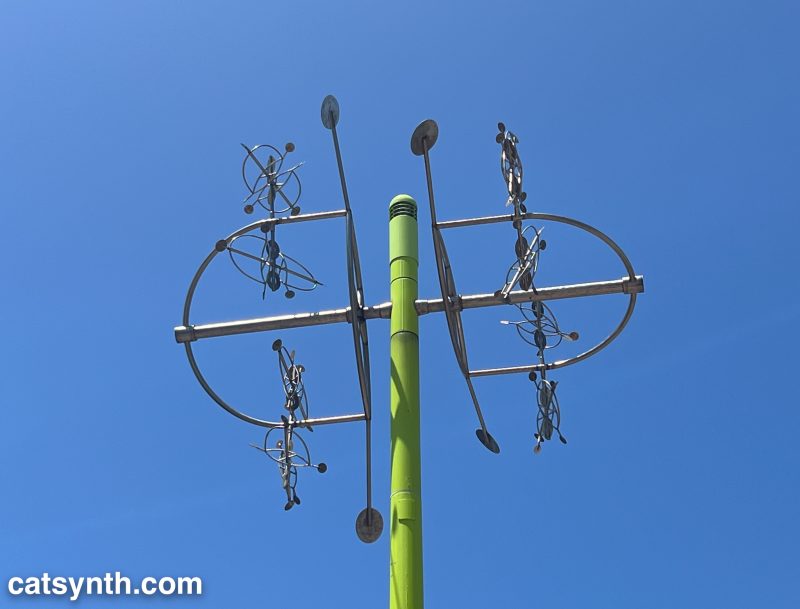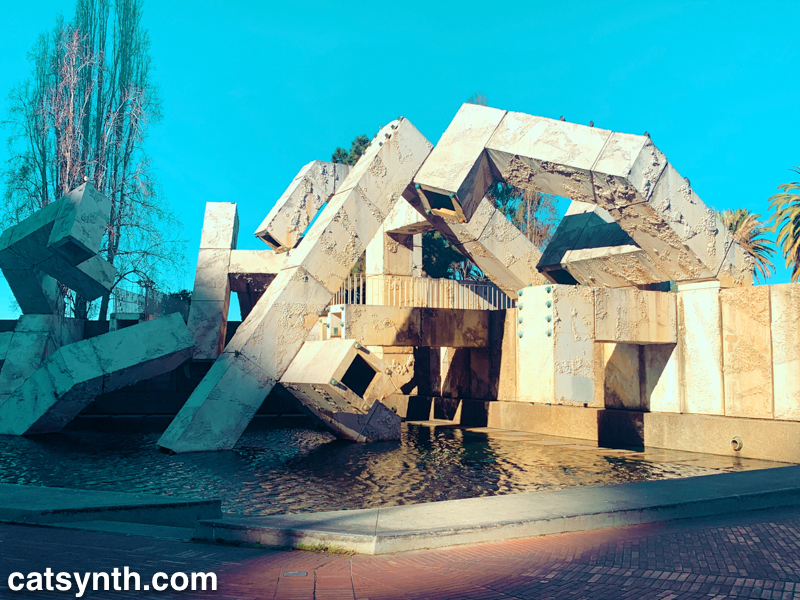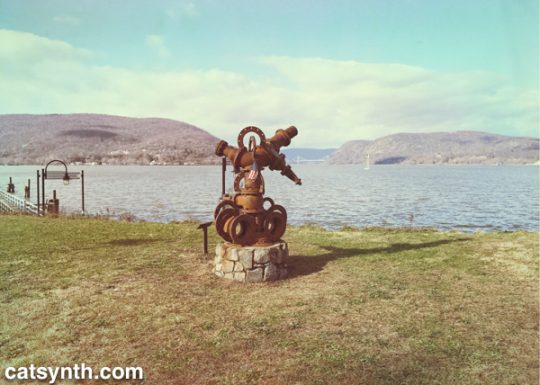
For Yom HaShoa, we share an image from the Memorial to the Murdered Jews of Europe in Berlin taken in August 2024.


A space-age-looking kinetic sculpture at a station along the new T line extension in San Francisco. The sculpture, titled Microcosmic, was created by Santa-Cruz-based artist Moto Ohtake. Besides being interesting in itself, it’s also cool because I have a commissioned piece by Ohtake here at CatSynth HQ!

The Vaillancourt Fountain at Embarcadero Center. Another image from the same magical day in San Francisco as our previous two Wordless Wednesdays.

Sculpture at Fleishmann Pier in Peekskill, NY. We see the Hudson River and the Bear Mountain Bridge in the distance.
Last week’s Wordless Wednesday was also taken in Westchester County along the Hudson River.